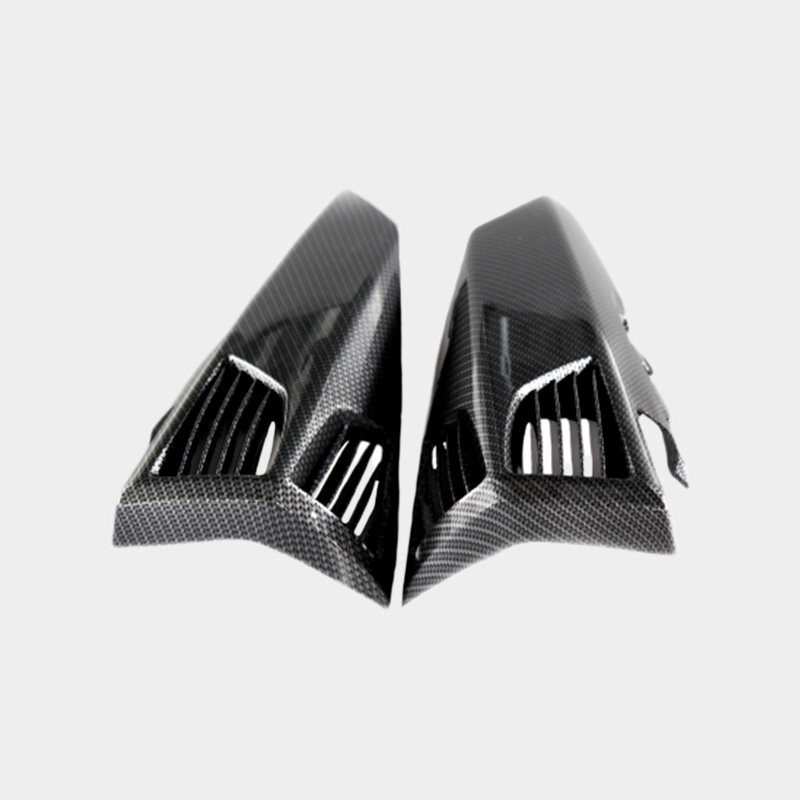A. Influence of mold structure The mold structure has a […]
A. Influence of mold structure
The mold structure has a great influence on the stress state of the Motorcycle Accessories Mould. A reasonable mold structure can make the mold work evenly, not easy to eccentric load, and small stress concentration. There are many kinds of molds, the forms are very different, and the working environment is also different. The following are discussed from several common aspects.
1) Corner radius The corner radius is divided into outer (convex) corner radius and inner (concave) corner radius. The size of the fillet radius of the working part not only affects the forming process and the quality of the formed parts, but also affects the failure mode and life of the mold.
2) Mold structure
① The concave fillet radius of the overall mold and the insert mold is easy to cause stress concentration and thus cause cracking.
②The guide of the mold adopts the mold of the guide device, which can ensure the accuracy of the mutual position of the relevant parts in the mold, increase the ability of the mold to resist bending and eccentric load, and avoid uneven wear of the mold.
B. Influence of mold working conditions
1) The material and temperature of the formed part
①Material The materials of forming parts are metal and non-metal. Generally speaking, the strength of non-metallic materials is low, the required forming force is small, the mold force is small, and the mold life is long. Therefore, metal forming dies have a lower lifespan than non-metal forming dies.
②Temperature When forming a high-temperature workpiece, the mold heats up due to the heat received. As the temperature rises, the strength of the mold decreases, and it is easy to produce plastic deformation. At the same time, the temperature of the surface in contact with the workpiece and the non-contact surface of the mold is very different, causing temperature stress in the mold.
2) Equipment characteristics
①The precision and rigidity of the equipment The force of the mold to form the workpiece is provided by the equipment. During the forming process, the equipment will elastically deform due to the force.
②The force of the speed equipment on the mold and the workpiece increases gradually over a period of time, and the speed of the equipment affects the force application process. The higher the speed of the equipment, the greater the impact force (impulse) the mold receives per unit time; the shorter the time, the less time the impact energy is transmitted and released, and it is easy to concentrate locally, causing the local stress to exceed the yield stress or fracture strength of the mold material. Therefore, the higher the equipment speed, the easier it is for the mold to break or plastically deform to fail.
3) Lubrication
Lubricating the relative moving surfaces of the mold and the blank can reduce the direct contact between the mold and the blank, reduce wear and reduce the forming force. At the same time, the lubricant can also hinder the heat transfer from the blank to the mold to a certain extent, reduce the temperature of the mold, and improve the life of the mold.
C. Influence of mold material properties
The properties of the mold material have a great influence on the life of the mold, these properties include: strength, impact toughness, wear resistance, corrosion resistance, hardness, thermal stability and thermal fatigue resistance.
D. Influence of the mold making process
1) When the module is forged, the temperature difference between the inside and outside caused by the heating and cooling of the module will generate temperature difference stress; processes such as upsetting, punching and reaming, such as improper selection of technical parameters, will easily cause the forging billet to crack. In addition, when the forging ratio exceeds a certain value, the transverse mechanical properties drop sharply due to the formation of fibrous structures, resulting in anisotropy.
2) In the electrical machining of the mold, different degrees of metamorphic layers will appear. In addition, due to local rapid heating and rapid cooling, residual stress and cracks are easily formed.
3) Heat treatment of the mold
Mold heat treatment is arranged after module forging and rough machining, which is almost the final process of mold processing. The selection of mold materials and the determination of the heat treatment process have a great impact on the performance of the mold.

Taizhou Huangyan Chuangji Mould Industry Co.,Ltd.